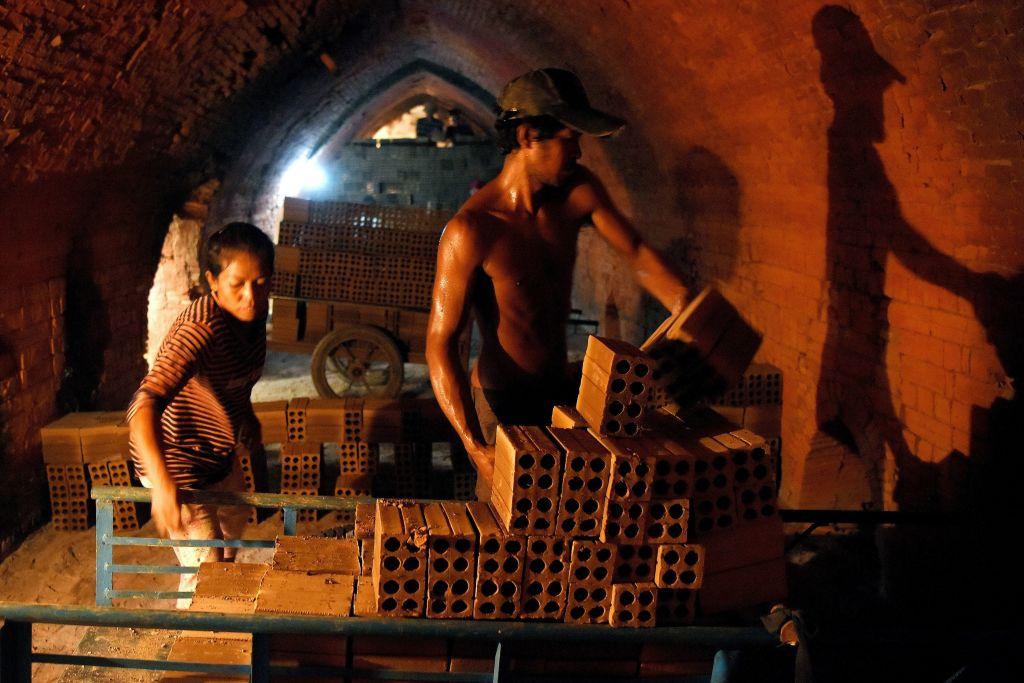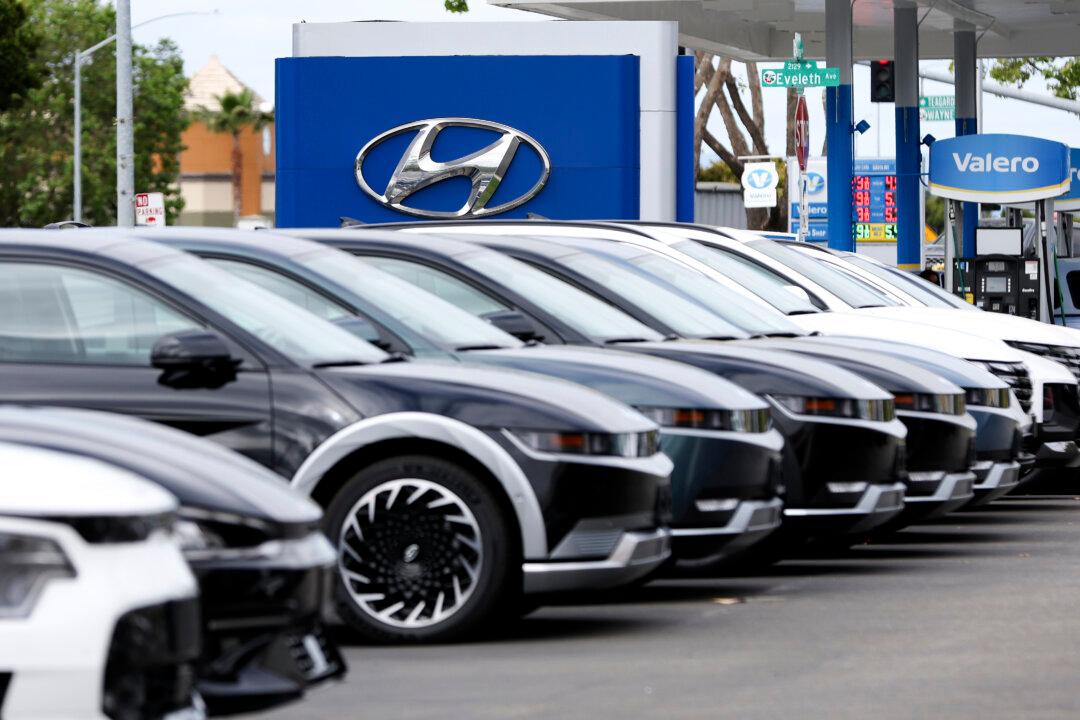Garment waste from major global brands are being used to fuel Cambodian brick factories, leading to dangerous health hazards for workers, according to a recent report.
The Cambodian League for the Promotion and Defense of Human Rights (LICADHO) visited 21 brick factories in the country between April and September this year. Seven of these factories used garment waste from 19 international brands, including Reebok, Under Armour, Lululemon, GAP, Old Navy, Primark, and Walmart to fuel their brick kilns, stated a Nov. 20 report from the organization. Brick kilns are furnaces in which bricks are baked or burned.
Brick factories often mix wood with waste from the garment industry to reduce the cost of firing the kilns. Such waste includes plastic, fabric cutoffs, rubber, and other materials.
“Workers are exposed to prolonged and excessive heat as well as ash, dust, smoke, and potential toxins from burning garment waste. The ovens’ heat can also make other working areas excessively hot. Smoke rises through chimneys, at times black from the burning garment waste,” the report said.
“Several workers reported that burning garment waste caused them headaches and respiratory problems; another worker reported that it made her feel especially unwell during her pregnancies. Garment waste stored at one brick factory fuelled an uncontrolled fire, threatening workers’ safety.”
On Oct. 24, LICADHO wrote to 16 brands (or parent firms) to get their response to the report’s findings while requesting them to end, prevent, or remedy the harm caused by the use of garment waste at brick kilns.
Out of the 16 brands, six responded and confirmed the receipt of the letter. Adidas and Lululemon pledged to investigate the matter. Cropp and Sinsay said they had taken action to deal with the issue. Tilley Endurables informed the organization that they were taking a preventive action.
LICADHO raised the possibility that a higher proportion of brick factories may be burning garment waste in recent years. This could be driven by declining profits at factories forcing owners to implement cost-cutting measures.
In recent years, the price of bricks has fallen from between $270 to $320 per 10,000 units to around $170 to $210, the report noted.
LICADHO pointed out that many of the brands already have public policies or commitments on waste management, human rights, and climate change. However, international apparel brands have “largely failed to address the harms caused by the burning of garment waste in brick factories.”
Company Responses, Toxic Chemicals
Responding to the report, Adidas told The Epoch Times that the company imposes “strict environmental policies” on its supply chain.Apparel suppliers in Cambodia are obligated to dispose of all waste materials either to government-licensed recycling centers or to a fully regulated and approved waste-to-energy plant with standards like air quality controls, it said.
“We regularly monitor our supply partners and we have not seen any evidence of our suppliers deviating from our requirements.”
The company has initiated an investigation “to see if waste is being diverted from the authorized disposal routes to the brick kilns. If this is being done with the knowledge and involvement of our supplier partners, it would be in breach of our policies and lead to enforcement action.”
Tilley Endurables is “very concerned with the findings” of the report, the company told The Epoch Times. “We can assure you that Tilley only works with vendors who have passed audits by reputable and reliable third party organizations” like the World Responsible Accredited Production (WRAP).
The Cambodian factory with which Tilley Endurables has a contract was audited and certified by WRAP, the firm noted.
Under WRAP audits, “facilities will ensure proper waste management, including monitoring the disposal of any waste material—whether solid, liquid or gaseous—to ensure such disposal is done safely and in a manner consistent with all relevant laws.”
“We have validated with the factory and can confirm that in accordance with local legislation, the factory had at this time, and continues to have contracts, in place with a Cambodian ministry of environment licensed contractor to remove waste regularly from their factory to an approved facility.”
Last year, an investigation by Unearthed, a journalism arm of Greenpeace UK, found that garment scraps from companies like Nike, Diesel, Ralph Lauren, and Clarks were being used at five different brick kilns in Cambodia.
“The burning of acrylic garments, especially when combined with plastic bags, hangers, rubber, and other waste as occurs in Cambodia, releases plastic microfibers and other toxic chemicals into the immediate environment,” Dr. Laurie Parsons of UK’s Royal Holloway University told the outlet.
This form of processing results in the health of workers and neighbors getting compromised on a short and long term basis, she said.
Debt Bondage
The LICADHO report put a spotlight on the issue of debt bondage in Cambodia’s brick industry. Many of the workers at brick factories are tied to their work through debt bondage. The workers who were interviewed as part of the report said they had lived in the factories for an average of 18 years.Most workers initially moved to a brick factory following a family member or neighbor, taking their first loans from the factory owners to pay for healthcare, buy land, repay loans, or support other family members.
“Debts are either held by an individual worker or by a couple or family who collectively work to receive one income and repay one loan. Workers’ debts to factory owners reportedly range from 1 million to 40 million riel (about $250 to $10,000), with most debts amounting to between 8 million and 12 million riel (about $2,000 and $3,000),” the report said.
“Some factory owners dock mandatory loan repayments from workers’ earnings. In other factories, workers receive their earnings and may choose to make voluntary repayments. But most workers LICADHO spoke with have not meaningfully reduced their debts due to being paid so little for their labor.”
Most people living at brick factories end up taking additional loans to meet living expenses like food or healthcare for illnesses. When faced with a need for a larger loan, workers move to another brick factory, get a new loan to repay the existing debt, and continue with their lives.
One worker, Sophea (name changed), reported that though her family makes around $187.50 per month on average, they are only left with roughly $50 after the factory owner deducts the debts. As a result, the family is forced to take even more loans.
Sophea has worked in 10 factories over a period of 30 years. Yet, her family still remains indebted, continuing to owe $2,000.
The Epoch Times reached out to Under Armour, Lululemon, GAP, Primark, Walmart, and Adidas for comment.







